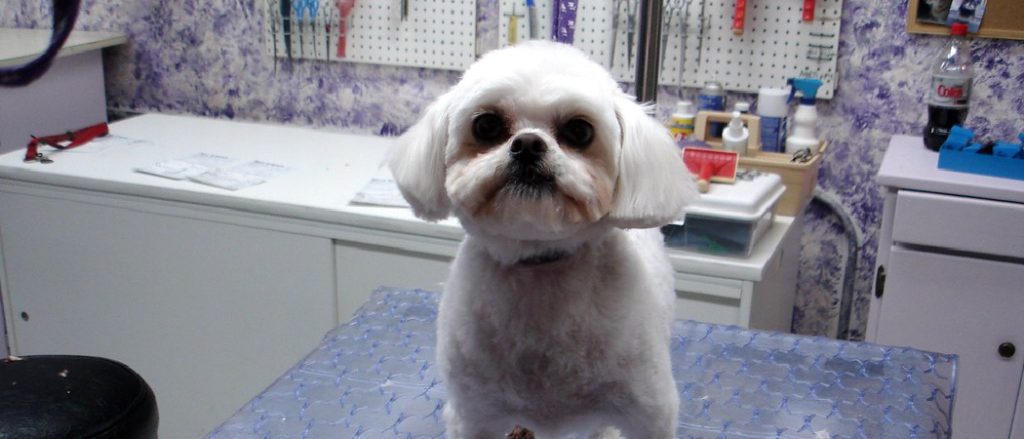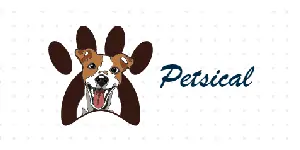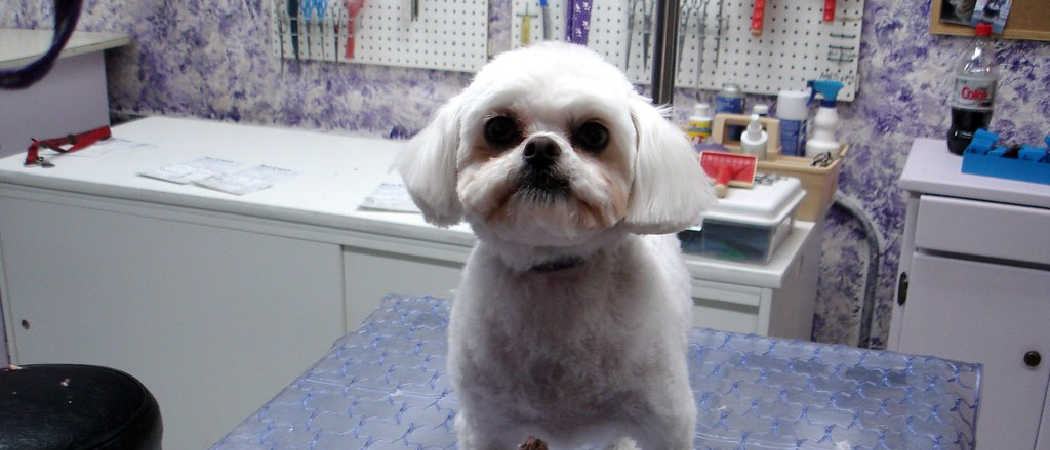Dog hair typically takes several weeks or months to grow back fully. The regrowth process varies depending on factors such as the dog’s breed, age, health, and the reason for the hair loss.


Credit: www.amazon.com
Factors Affecting Dog Hair Growth
When it comes to understanding how long it takes for dog hair to grow back, several factors come into play. Dog owners often wonder about the reasons behind their pet’s hair growth rate, and whether there are any ways to speed up the process. In this article, we will explore the various factors that can affect a dog’s hair growth and provide insights into each one.
Overall Health
One of the most crucial factors influencing how quickly a dog’s hair grows back is their overall health. Just like humans, dogs need to be in optimal health for their hair to grow properly. Poor health can lead to various issues, such as hormonal imbalances and nutritional deficiencies, that can impact hair growth. Therefore, it is vital to ensure that your furry companion is receiving the necessary care and attention to maintain good overall health.
Breed
The breed of your dog also plays a significant role in determining the rate at which their hair grows back. Different breeds have different hair growth patterns and textures. For example, breeds with continuous hair growth, such as Poodles or Yorkshire Terriers, tend to regrow their hair at a faster rate compared to breeds with slower hair growth cycles. It is essential to be aware of your dog’s breed-specific hair growth characteristics to set realistic expectations for hair regrowth.
Nutrition
Nutrition is another crucial factor affecting dog hair growth. A well-balanced diet that provides the necessary vitamins, minerals, and proteins is essential for healthy hair growth. Adequate protein intake is particularly important as hair is primarily made of protein. Consult with your veterinarian to ensure your pet is receiving the right nutrients for their specific needs, as different dogs may require different types of diets.
By considering these factors, you can gain a better understanding of how long it may take for your dog’s hair to grow back. Remember to prioritize your dog’s overall health, be aware of their breed-specific hair growth characteristics, and provide them with a high-quality diet to promote healthy hair growth. With proper care and attention, you can help your furry friend regain their luscious coat in no time.

Credit: www.purina.co.uk
Hair Growth Phases In Dogs
Dog hair growth phases vary depending on the breed, but on average, it takes around 2-6 months for a dog’s hair to grow back after it has been clipped or shaved. During this period, it is important to provide a balanced diet and proper grooming to promote healthy hair growth in dogs.
Anagen Phase
During the Anagen Phase, which is also known as the growth phase, a dog’s hair follicle is actively producing new hair. This phase can last anywhere from a few weeks to several months, depending on the breed and individual dog. It is during this phase that the hair is growing at its fastest rate. When a dog’s hair is in the Anagen Phase, it is important to provide proper nutrition and care to support healthy hair growth. A well-balanced diet, regular grooming, and the use of appropriate hair care products can help promote the growth of strong and shiny hair in dogs.
Catagen Phase
The Catagen Phase is a transitional phase in the hair growth cycle. During this phase, the hair follicle stops producing new hair and begins to shrink. This phase typically lasts for a few weeks. It is during this phase that the hair shaft begins to detach from the hair follicle. While the Catagen Phase is a natural part of the hair growth cycle, it is important to note that excessive shedding or hair loss during this phase may indicate an underlying health issue. If you notice excessive hair loss or any other concerning symptoms, it is recommended to consult with a veterinarian for proper diagnosis and treatment.
Telogen Phase
The Telogen Phase, also known as the resting phase, is when the hair follicle is inactive. During this phase, the hair shaft is fully detached from the hair follicle and remains in place until a new hair starts to grow. The length of the Telogen Phase can vary greatly depending on factors such as breed, age, and overall health. It is during this phase that the hair follicle prepares for the next Anagen Phase, where new hair will begin to grow. It is important to note that during the Telogen Phase, the old hair may become loose and easily shed, leading to temporary hair thinning or patchiness. However, this is a normal part of the hair growth cycle and should not be a cause for concern. Understanding the hair growth phases in dogs can help pet parents better understand their furry friend’s hair growth patterns. It is important to provide proper nutrition, grooming, and care to support healthy hair growth in dogs and to identify any potential issues early on.
Average Time For Dog Hair Regrowth
The average time for dog hair regrowth depends on several factors, including the breed of the dog, the individual dog’s health, and the specific reason for the hair loss. While the exact regrowth time can vary, it’s helpful to understand the general average times for different types of dog hair. Let’s take a closer look at the average time for regrowth for short-haired breeds, medium-haired breeds, and long-haired breeds.
Short-haired Breeds
Short-haired breeds typically have hair that grows back relatively quickly compared to other types of dog hair. On average, it can take about 1 to 2 months for the hair to regrow fully. However, it’s important to note that this timeline may vary depending on the individual dog and the reason for the hair loss.
Medium-haired Breeds
Medium-haired breeds, such as certain spaniels or setters, have hair that falls between short and long lengths. The regrowth time for medium-haired breeds is typically longer than that of short-haired breeds. It can take about 2 to 4 months for the hair to fully regrow. Again, this timeframe can vary based on the dog’s overall health and the cause of hair loss.
Long-haired Breeds
Long-haired breeds, like the Shih Tzu or Maltese, have lengthy and voluminous coats that require more time to regrow. The regrowth time for long-haired breeds can range from 4 to 8 months. It’s essential to provide proper care and grooming during this period to ensure healthy regrowth and prevent matting or tangling of the hair.
It’s important to remember that the average regrowth times mentioned above are general estimates and can vary from dog to dog. Factors such as the dog’s overall health, nutrition, and genetics can influence how quickly the hair grows back. If you notice excessive hair loss or a delay in regrowth, it’s always a good idea to consult with a veterinarian to rule out any underlying health issues or determine the best course of treatment.

Credit: www.nytimes.com
Frequently Asked Questions For How Long Does Dog Hair Take To Grow Back
How Long Does It Take For Dog Hair To Grow Back After Shaving?
The duration depends on the dog breed and individual factors such as overall health, nutrition, and genetics. Generally, it takes around 3 to 6 months for dog hair to fully regrow. However, some breeds may take longer, while others may have a quicker regrowth rate.
Regular grooming and a balanced diet can help promote healthy hair growth.
Is There Anything I Can Do To Speed Up My Dog’s Hair Regrowth?
While there is no surefire way to accelerate hair regrowth, you can aid the process by ensuring your dog has a balanced diet rich in essential nutrients and vitamins. Regular brushing stimulates hair follicles and promotes blood circulation, which may help speed up the regrowth process.
Consult with your veterinarian for custom recommendations based on your dog’s specific needs.
Are There Any Factors That Can Affect The Rate Of Dog Hair Regrowth?
Several factors can influence the rate of dog hair regrowth. These include the dog’s breed, age, overall health, genetics, and grooming practices. Some medical conditions or stress can also impact hair regrowth. By maintaining your dog’s overall health, providing proper nutrition, and practicing regular grooming, you can optimize their hair regrowth potential.
If you are concerned about the rate of regrowth, consult your veterinarian for further evaluation.
Conclusion
To wrap up, the length of time it takes for dog hair to grow back may vary depending on several factors such as breed, overall health, and specific circumstances. It’s important to provide proper care, nutrition, and regular grooming to promote healthy hair growth.
Remember, patience is key as the growth process can take weeks to months. If you have concerns, consult with a veterinarian for personalized advice.


